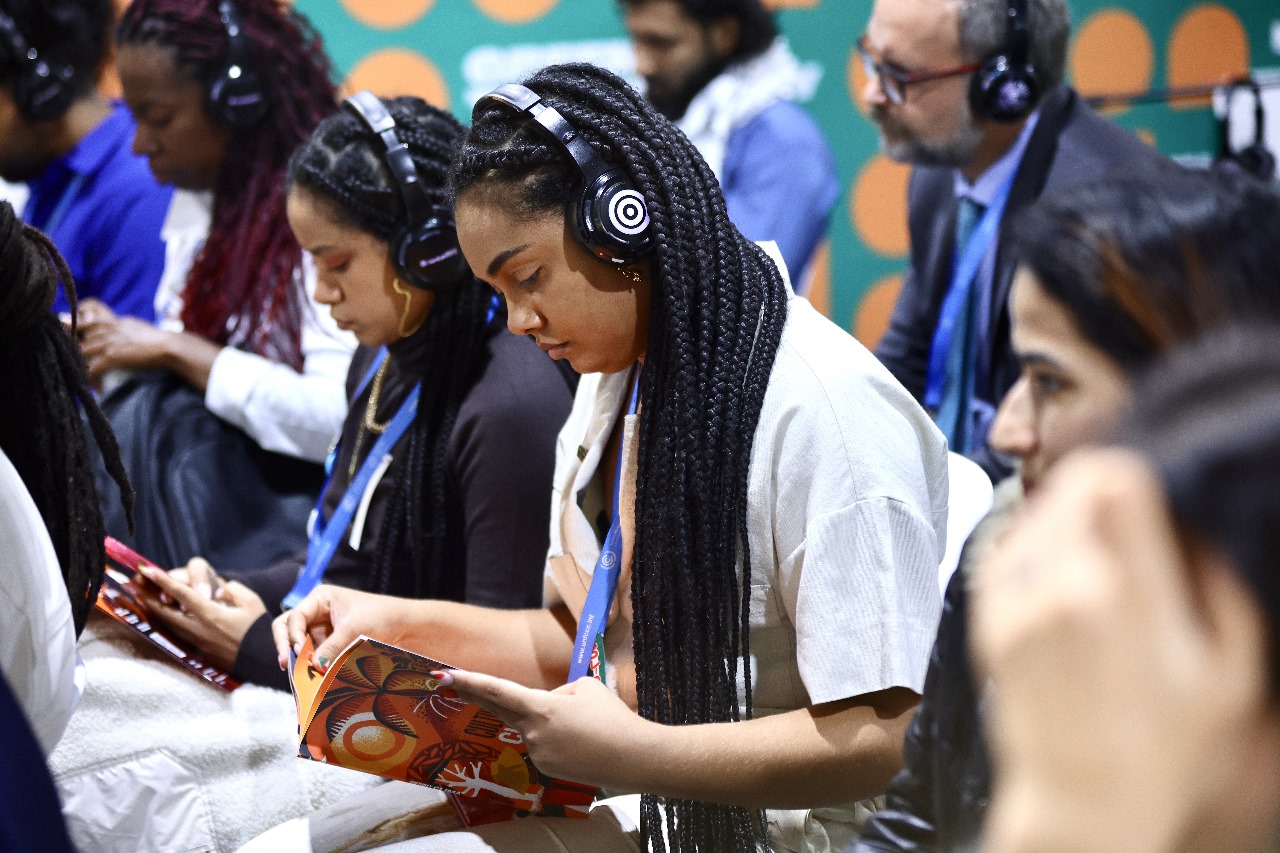Colours can make the difference. Photos evoke feelings and engage more than data. Art and culture are a powerful tool to get more attention and lead to concrete action in the fight against climate change. This was the message given to the audience at an event hosted in the Regional Climate Foundations Pavilion last Friday (15). “Art is powerful in connecting to the people. It doesn’t matter where you are from, you can understand the message. Art can go so far!”, summarized Shaq Koyok, an indigenous artist from Malaysia.
Koyok discovered this statement in practical when he realized that his painting of the environment that surrounds his Temuan tribe in Selangor state was effective in giving attention to the deforestation. “When I started painting, all the threes were in place, but soon they had disappeared. And my paintings showed it”, explained.
Aware about this potential, two Brazilian cultural producers joint efforts to make the first research on the status of culture and climate intersection in the country. “Actually, is probably a pioneer research in the Latin American continent”, explained Eduardo Carvalho, director at Outra Onda Conteúdo and Head of RCF Pavilion.
The extensive research included a comprehensive scientific literature revision, a mapping of public policies that approach this intersection, interviews and article writing from many experts in the area and, finally, a list (that is being updated) of concrete initiatives that cross the two fields. The main results of the research are published in a report (available in Portuguese, Spanish and English), and that can be accessed online.
“In most countries, especially in the Global South, investment in plans and programs that integrate culture, climate and sustainable development is non-existent or incipient”, conclude the research.
Additionally, explained Mariana Resegue, the executive director at C de Cultura, countries are not prepared to protect culture in the climate change context — including cultural heritage or immaterial cultural aspects.
“Cultural heritage isn’t just something to preserve. It’s a vital tool for driving climate solutions. Let’s make sure it gets the attention it deserves”, said Gunjan Nanda, a eco-communicator, global digital organizer, culture advocate, and community builder. Nanda also launched in the COP29 her research ‘Legacy Solutions, cultural heritage in global climate action’ (also available online)
Lack of data
A huge difficult on researching culture and climate is a lack of reliable data to analyse. And specially when it comes to Brazilian reality, this problem is even big. “Talking about evidence, there is a big gap in Brazil. Almost all the references that we found are produced in English, and in Brazil less than 1% of people are English speakers”, lamented Resegue.
The concern of all the panellists is that, as the next COP will be held in Belém, an Amazonian city in the north of Brazil, it is critical to produce national knowledge about the intersection between climate and culture — considering all the cultural diversity of indigenous people in the country, where there are more than 200 different indigenous language alive.
“Evidence is power, and we must construct bridges for amplifying the debate”, claimed Resegue.

Eduardo Carvalho remembered that it was only at Sharm el-Sheikh COP27 that culture was included as an item in the agenda of UNFCCC: “In that historical moment, we were able to include a paragraph in the climate agreement to create a formal discussion about this issue. It was a long way”, said, expecting that this COP29 define the next steps in this agenda, including workshops to prepare the next UN climate conference.
‘Artivism’
During the conversation between the speakers, a concept emerged: the ‘artivism’, and the ‘artivists’ — the production and the creators that work with a clear objective to transform reality.
“For me, there is no separation between art and activism. Every art is political because it moves you in a way, whether you like or not”, said the Malaysian artist Koyok.
The Regional Climate Foundation Pavilion was created with this concept, of giving to the COP29 negotiators and observers reasons to believe in the future and in their role at Baku. All the walls of the pavilion held cultural messages. The exhibition “Building Hope” shows pictures and text messages representing the Earth’s biodiversity and the human role in the just transition. It is open to the public during all the days of COP 29 in the Delegations space, in the Blue Zone.
As the Climate and Culture report says, the perception of the climate crisis is beginning to change, but the debate around solutions is still restricted, with technical language that is not very understandable. “Through culture it is possible to humanize messages, with empathy as the raw material, to create context about facts and policies that influence all aspects of life”, says the text, calling for the humanity to awaken to being part of the solutions.
“We are only beginning. The climate fight is not only this formal agenda developed during the COPs. We need to touch the minds and the hearts outside the blue zone to make the difference, and to save our future”, concluded Eduardo Carvalho.

